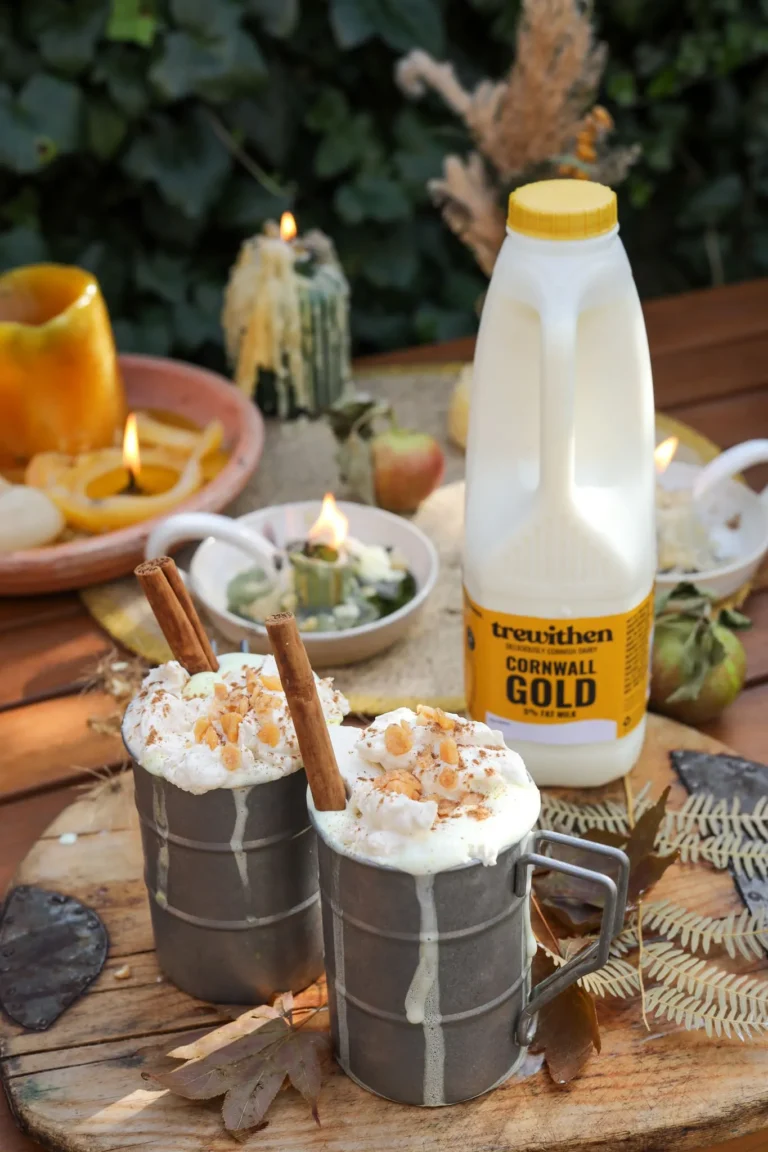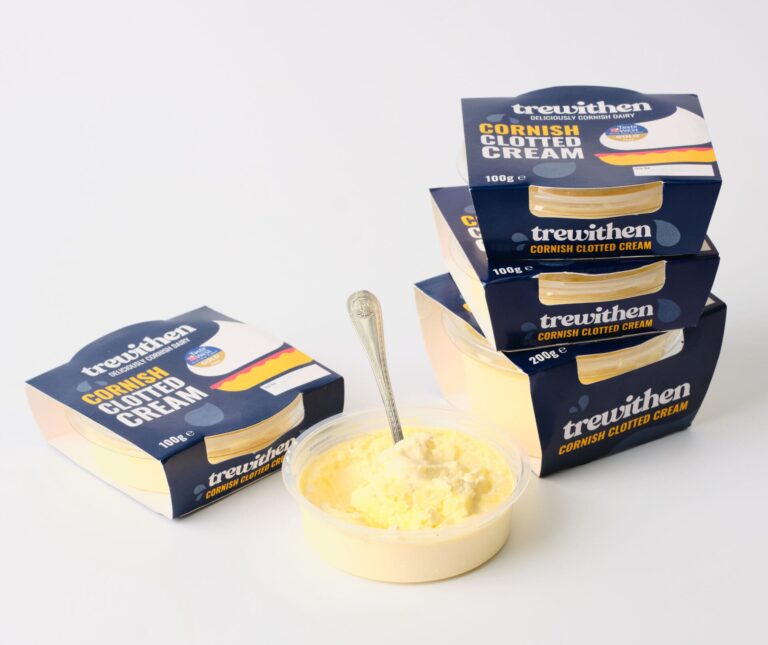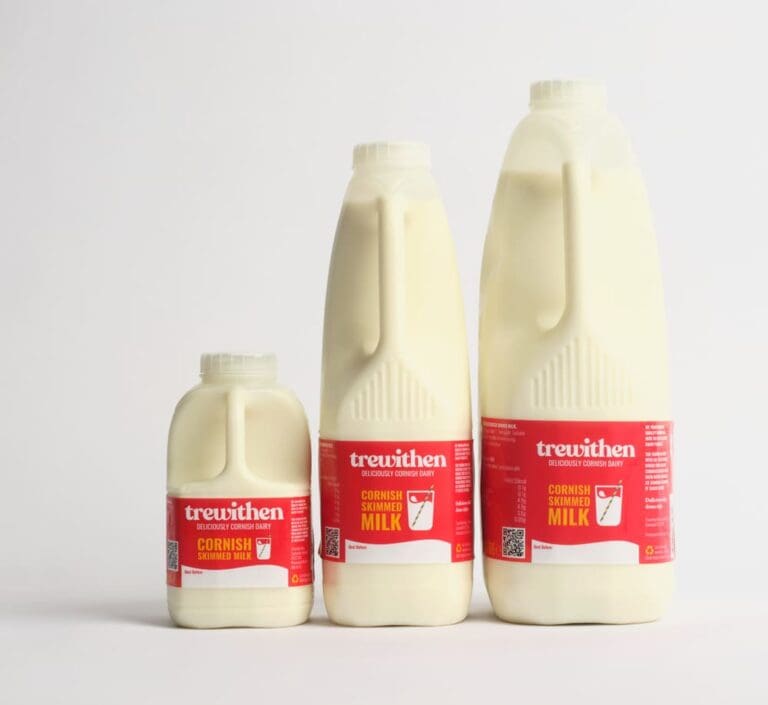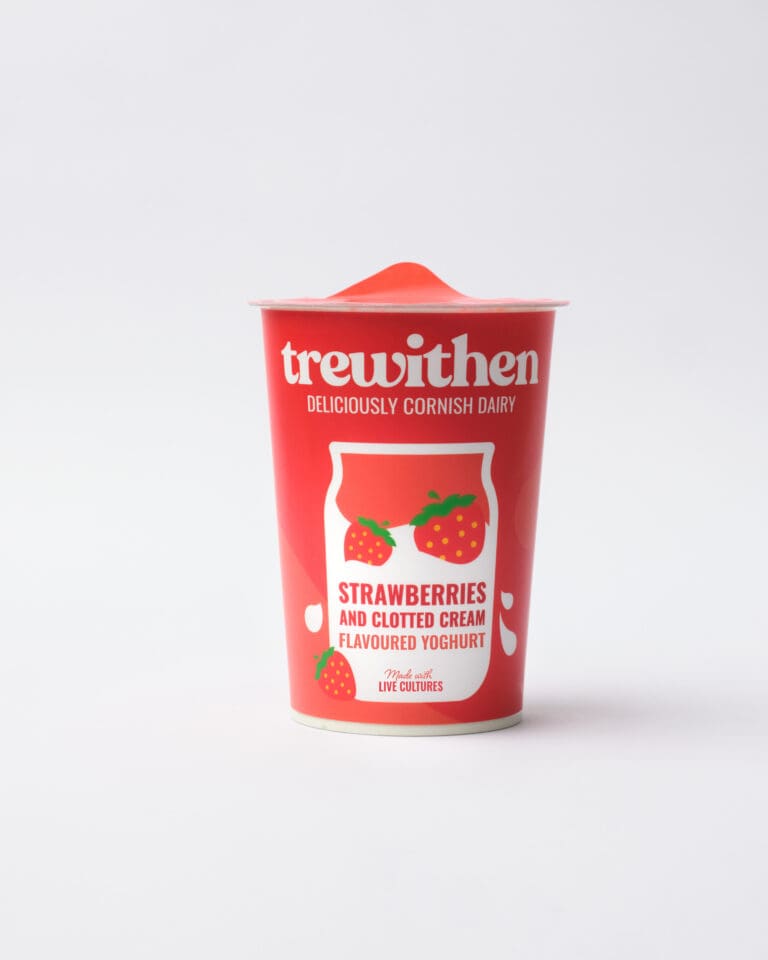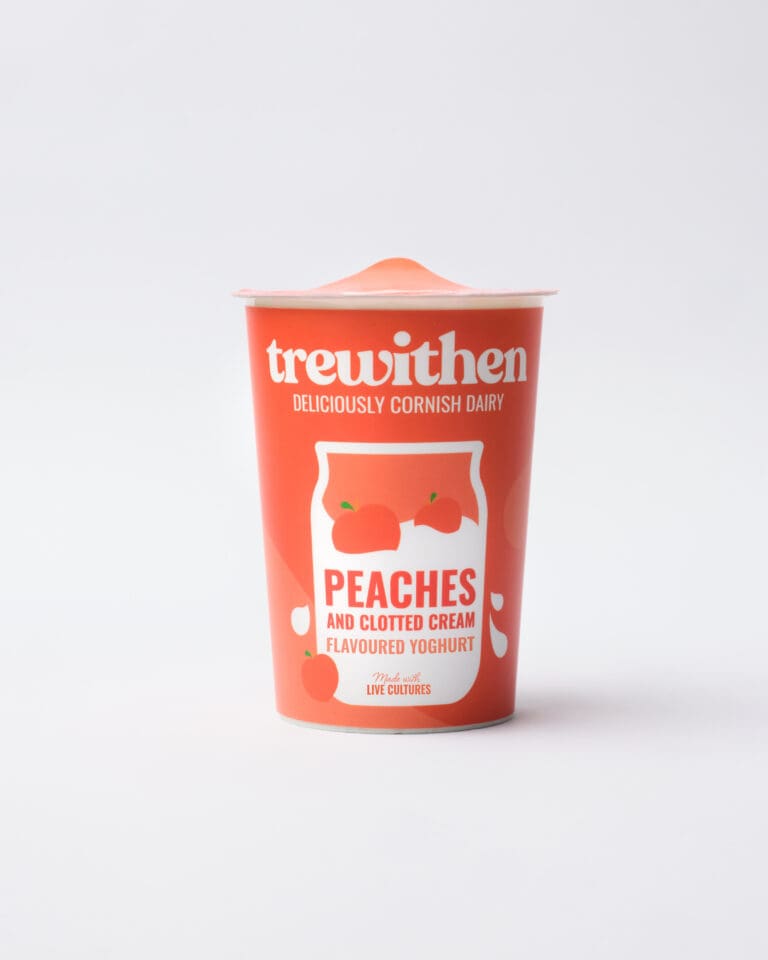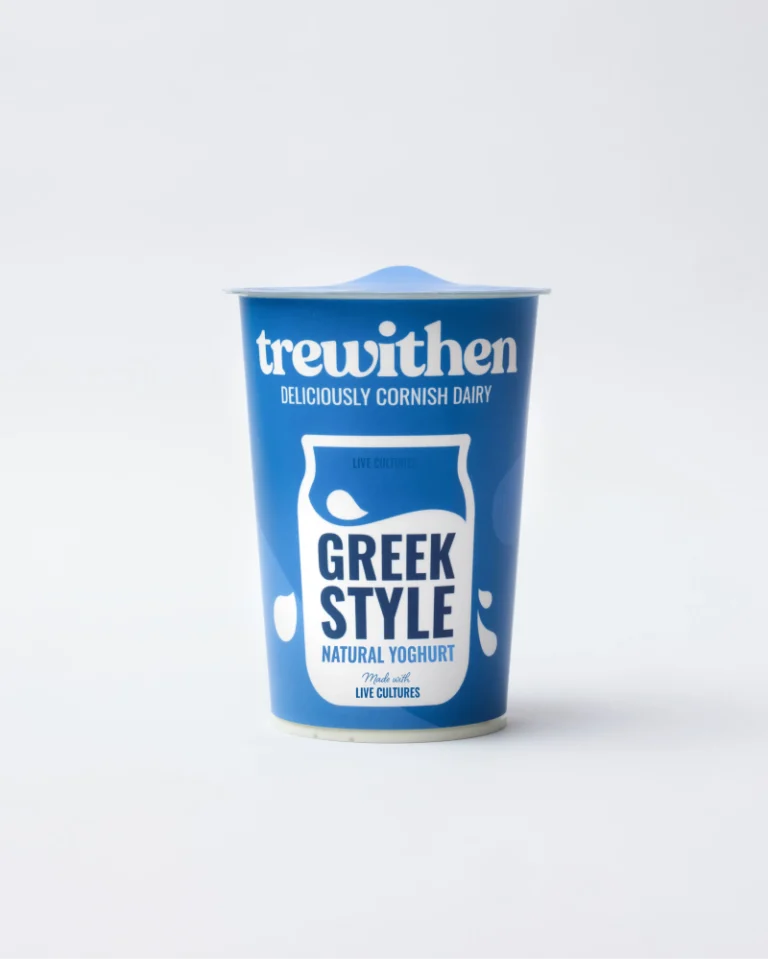Trewithen Grazed Grass-Fed Milk
Our Trewithen Grazed grass-fed milk celebrates the pure, natural goodness that comes from cows living as nature intended – freely grazing on Cornwall’s lush, biodiverse pastures. This delicious milk comes from farmers leading the way in regenerative farming methods, with herds that spend their days roaming our coastal grasslands, feeding on a rich variety of native grasses and wildflowers that thrive in Cornwall’s unique maritime climate.
Deliciously Fresh and Creamy
Grazed milk comes from cows that primarily consume grass and forage in pastures. When they’re not able to graze at certain times of the year, we feed the cows locally grown forages!
Through our commitment to regenerative farming practices, we’re not just producing exceptional grass-fed milk – we’re actively improving soil health, supporting wildlife habitats, and reducing our carbon footprint with every glass. The result is a balanced grass-fed milk from a unique blend of Cornish herds; a result of a farming system that works in harmony with Cornwall’s precious landscape for generations to come.
Nutritional Information
Typical values per 100ml
Energy 203KJ/48kcal
Fat 1.6g
(of which saturates) 1.0g
Carbohydrate 5.0g
(of which sugars) 4.6g
Protein 3.4g
Salt 0.09g
Additional Details
Allergy Advice: Cow’s Milk
Keep refrigerated below 5 °C.
Store upright.
Suitable for vegetarians.
Not suitable for home freezing.
For best before see front of pack.
Where To Buy
Check out more on where to find us here.
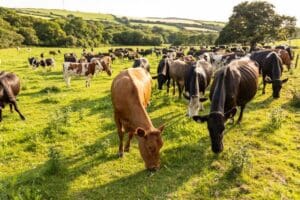
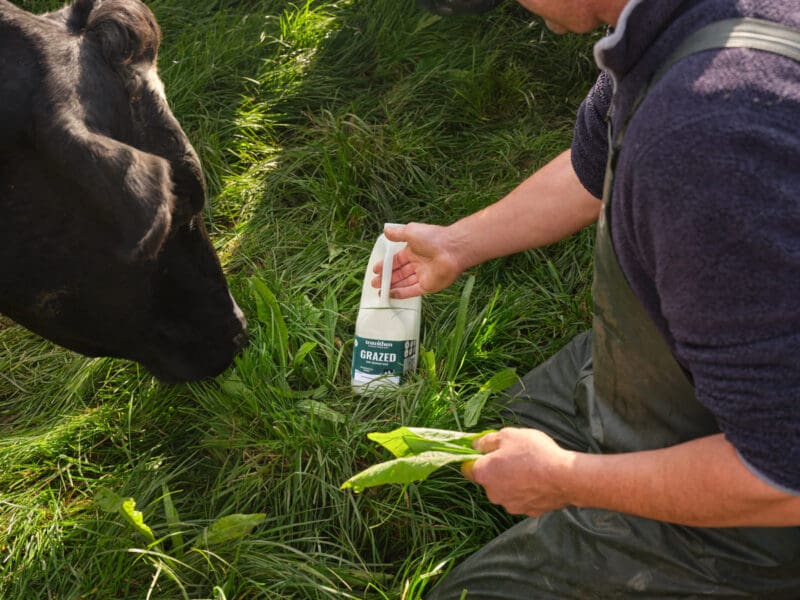
A mix of dairy herds
Our Cornish grass-fed milk comes from local farms who implement regenerative farming techniques. This process enhances soil health, boosts biodiversity, and sequesters carbon, all while producing the high-quality milk Trewithen is known for. We are caretakers of the land; we and our farmers recognise the need to look after the environment for future generations.
Our milk comes from a mix of dairy herds: Brown Swiss, Friesian, Holsteins and Jerseys. It is teamwork between us and our farmers that ensures our dairy cows receive the right diet, care, and attention to produce perfectly balanced milk every time.
Fun fact: The secret of why grass-fed milk is so delicious lies in the fresh grass itself – when cows graze on living pastures, they convert the nutrients from fresh grasses and wildflowers directly into their milk, creating a nutritional profile that’s impossible to replicate with indoor feeding.
What is Grazed Milk?
Grazed milk comes from cows that spend their time freely roaming and feeding on fresh pastures rather than being confined indoors or fed processed feeds. Our Grazed milk is produced by herds that have access to Cornwall’s coastal grasslands throughout the grazing season, where they naturally forage on a diverse mix of grasses, herbs, and wildflowers.
Shop now at:

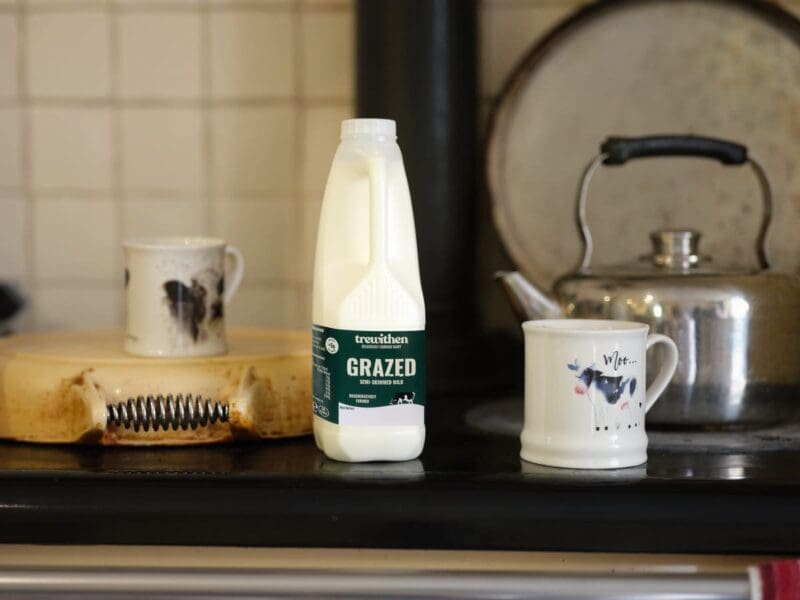
Benefits of grass fed milk
Naturally produced
Milk from grass-fed cows reflects the rhythm of the seasons, with flavour and character shaped by the lush, varied pastures they graze on.
Seasonal variety
As our cows graze freely, their diet changes throughout the year, creating subtle shifts in the taste and appearance of the milk, just as nature intended.
Carbon footprint reduction
Our regenerative farming practices help sequester carbon in grassland soils, with well-managed pastures actually removing CO2 from the atmosphere, making on-farm activities more environmentally friendly.
Supporting biodiversity
Rotational grazing encourages diverse plant species and creates habitats for wildlife, with our Cornish pastures supporting native wildflowers, insects, and birds that thrive in naturally managed grassland ecosystems.
Regenerative farming
Regenerative farming is an agricultural approach focused on improving and revitalising soil health, biodiversity, water cycles, and ecosystem resilience. Our natural, 100% pure Cornish grass-fed milk comes from family farms leading the way in regenerative CO2-reducing farming practices. Grazing animals play a key role in nutrient cycling. Managed carefully, they can enhance soil health through manure fertilisation and minimal soil disturbance, aligning with natural ecosystem processes. It’s about farming in harmony with nature.

Delicious Milk recipes
At Trewithen Dairy, we believe that whether it’s a quick snack for you, or a delicious wholesome meal for your nearest and dearest, we have the best deliciously Cornish dairy products to elevate your next dish to MasterChef status! Explore our delicious semi-skimmed milk recipes.
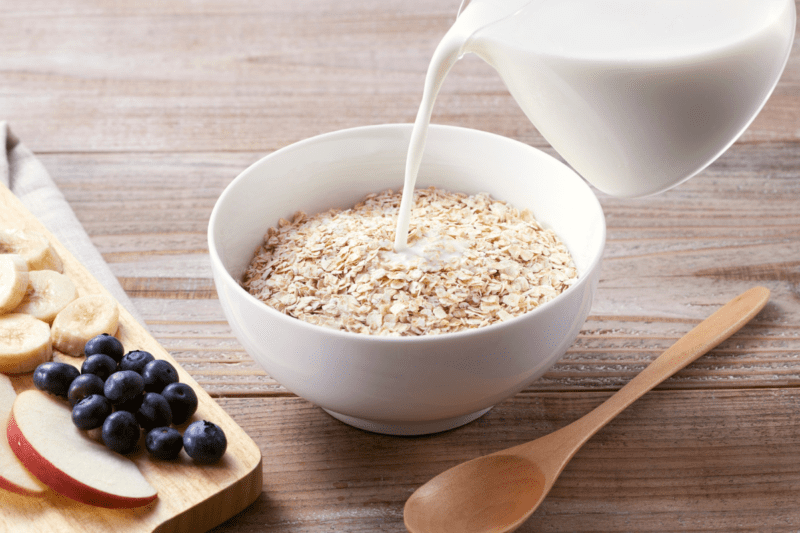
Trew Cornish Dairy
At Trewithen Dairy, we and our farmers are passionate about the health and welfare of the cows that produce the essential ingredient in all our great tasting dairy products – high quality, Cornish milk. The dairy farms that are contracted to supply Trewithen are all located within 25 miles of the dairy and we take great pride in the fact that we know each one of our farmers personally.
Although no two Trewithen Dairy farms are the same, all our farmers share a common set of values and comply with a comprehensive set of standards that ensure high levels of animal health, welfare and husbandry. We are caretakers of the land; we and our farmers recognise the need to look after the environment for future generations.

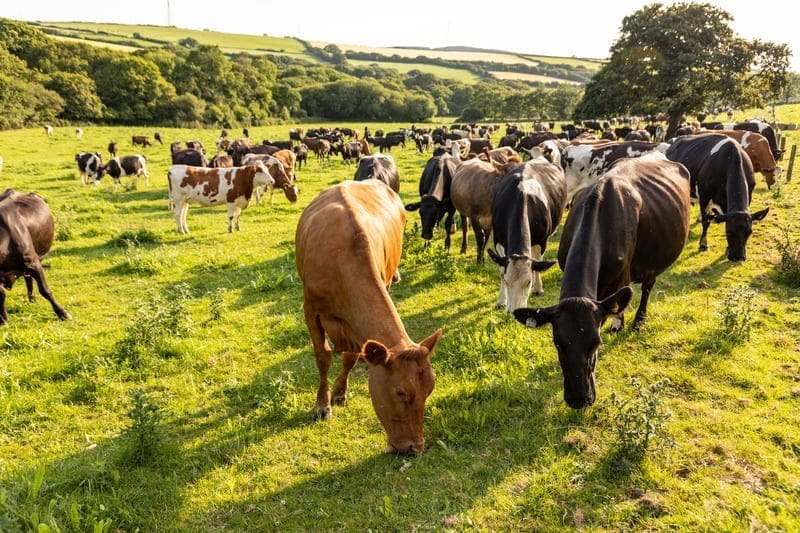

Check out our other cornish products
Discover our other delicious Cornish products.
FAQs
Learn more about our Trewithen standards and delicious dairy products.
Is grass-fed milk healthier?
Grass-fed milk comes from cows that graze freely on lush pastures, producing milk that reflects the seasons and the natural diversity of their diet. Some say that grazed milk is richer in nutrients. While we can’t make specific nutritional claims, many people enjoy its fresh, distinctive taste and the way it’s produced in harmony with nature.
Do grazed cows produce more fat in milk?
Grazed cows don’t necessarily produce higher fat content, but the fat they do produce is of better quality, containing more beneficial nutrients.
What does free to grazed milk mean?
Free to graze milk comes from cows that have unrestricted access to pastures where they can roam naturally and feed on fresh grass rather than being confined indoors. The milk comes from the herds of six farmers who all practice regenerative farming methods on their land.
Is grass-fed milk better for the environment?
Grass-fed dairy farming often uses sustainable practices like rotating grazing to help keep soils healthy. This rotational system prevents overgrazing, allows pastures to recover, improves soil structure, and can increase carbon sequestration.
How long do the cows graze?
Our grass-fed cows graze for a minimum of 120 days per year, but it’s often more, depending on the local climate and weather conditions.
Contact us
Phone, email, social media, or even a good old letter. We are happy to hear from you.


